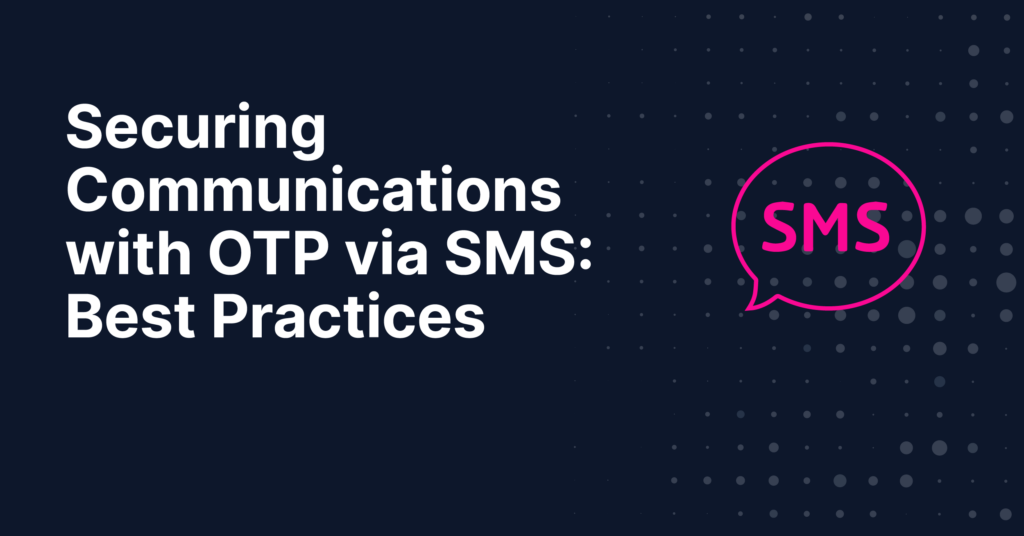OTP, security, and SMS are critical components in today’s digital communication landscape, providing an essential layer of protection for online transactions and data exchanges.
This article delves into the significance of One-Time Passwords (OTP) as a security measure, focusing on their implementation via SMS to safeguard communications.
You will gain insights into the best practices for deploying OTP solutions, including selecting reliable SMS providers, ensuring timely delivery, and enhancing OTP security.
By understanding these key strategies, businesses and individuals can significantly improve their security posture, minimizing the risk of unauthorized access and ensuring the confidentiality of sensitive information.
1. Understanding OTP: Definition and Mechanics
One-Time Passwords (OTP) are unique, temporary codes used to authenticate a user’s identity or verify a transaction.
Generated by an algorithm, OTPs are valid for a short duration, typically ranging from a few minutes to several hours, before they expire and become unusable.
This temporary nature ensures a high level of security, as the password cannot be reused or exploited by unauthorized individuals. The generation and delivery of OTPs can occur via various channels, including SMS, email, or dedicated authentication apps.
The mechanics behind OTP involve a combination of factors like time-synchronization between the token generator and the authentication server or a mathematical algorithm that produces a new code at each interval or event.
This process effectively shields sensitive data and access points against common cyber threats, making OTP an essential component of modern security protocols.
2. The role of OTP in enhancing security measures
One-Time Passwords (OTP) play a pivotal role in securing digital communications, acting as an additional layer of verification beyond traditional password protection.
By generating a unique, temporary code for each transaction or login attempt, OTPs significantly reduce the risk of unauthorized access, even if the primary credentials are compromised.
The utilization of OTP via SMS is particularly effective, leveraging the ubiquity and accessibility of mobile phones as a direct channel for secure authentication.
This method ensures that only the intended recipient can complete the verification process, enhancing the security of online activities ranging from financial transactions to accessing sensitive information.
Understanding the mechanics and importance of OTPs is crucial for businesses and individuals alike, as it represents a straightforward yet powerful tool in the ongoing battle against cyber threats.
3. Statistics in The Role of OTPs in Enhancing Security
-
-
Improved Security:
-
A 2022 study by Microsoft found that implementing multi-factor authentication (MFA) which often utilizes OTPs, can reduce the risk of account compromise by 99.9%!
-
-
User Adoption on the Rise
-
A 2023 survey by Google revealed that 63% of global users now enable 2FA on their online accounts, acknowledging the importance of additional security measures.
So, utilizing OTPs as part of a multi-layered security approach significantly improves security posture.
You may also be interested in knowing more details about Use Cases for OTP in various industries
4. Best Practices for Implementing OTP via SMS
Implementing OTP via SMS effectively requires adherence to several best practices to ensure optimal security and user experience:
1. Choose a Reliable SMS Provider:
Partner with a trusted provider like Javna, known for its prompt, secure message delivery and robust infrastructure, to ensure the reliability of OTP transmissions.
2. Ensure Timely Delivery:
OTPs should reach the user promptly to avoid delays in authentication processes.
3. Implement Token Expiration:
Set a short validity period for each OTP to minimize the window for potential misuse.
4. Secure the Transmission:
Use encryption and secure protocols to protect the OTP during transmission.
5. User Experience Considerations:
Keep the process simple and user-friendly, providing clear instructions for OTP usage.
6. Fallback Options:
Offer alternative authentication methods in case of SMS delivery failures.
7. Monitor and Analyze:
Regularly review OTP transactions for any irregularities or security breaches.
Following these practices helps maintain the integrity of the OTP process, safeguarding communications while ensuring a smooth and secure user experience.
5. Techniques for strengthening OTP security
Strengthening OTP security involves strategic techniques that enhance the integrity and effectiveness of one-time passwords:
-
- Token Complexity: Increase the complexity of OTPs by using a mix of numbers, letters, and special characters, making them harder to predict or brute-force.
- Expiration Times: Implement short expiration times for OTPs, typically a few minutes, to minimize the window for potential misuse.
- Limit Attempts: Restrict the number of attempts a user can make with an OTP, reducing the risk of unauthorized access through guesswork.
- Secure Delivery Channels: Ensure the transmission of OTPs is protected through encryption, safeguarding the code from interception.
- Verification Back-End Security: Enhance the security of the server that verifies OTPs against intrusion and data breaches.
Adopting these techniques ensures OTPs remain a robust component of security protocols, protecting against various cybersecurity threats.
6. Conclusion
In conclusion, securing communications with OTP via SMS embodies a crucial strategy for enhancing digital security in an era increasingly threatened by cyber vulnerabilities.
By adhering to best practices for implementation, strengthening OTP security through token complexity and expiration times, and leveraging emerging authentication technologies, businesses can fortify their defenses against unauthorized access.
Furthermore, balancing the imperative of security with the necessity for user convenience ensures that protective measures bolster, rather than hinder, the user experience.
As we navigate the complexities of digital security, the principles outlined here serve as a guide for organizations aiming to safeguard their communications effectively, underscoring the enduring importance of OTP in the broader landscape of cybersecurity measures.
7. FAQs about Securing Communications with OTP via SMS
-
What is OTP code via SMS?
An OTP code via SMS is a single-use, time-limited numerical or alphanumeric code sent to a user’s mobile device through a text message. It’s used for authenticating transactions or logins, adding an extra layer of security by verifying the user’s identity through their mobile phone.
-
Are SMS OTP secure?
Yes, SMS OTPs are secure when used correctly, providing an additional layer of authentication beyond traditional passwords. However, their security can be enhanced through best practices like implementing token complexity, short expiration times, and encryption to protect against interception and unauthorized access.
-
How does OTP work in SMS?
OTP works in SMS by generating a unique, time-sensitive code that is sent to the user’s mobile device. When accessing a service, the user enters this code along with their credentials for verification. This process ensures an extra layer of security, confirming the user’s identity through something they possess (their phone) and something they know (the OTP).
-
Is OTP more secure than password?
Yes, OTP is generally more secure than a static password because it changes with each transaction or login attempt, making it difficult for unauthorized users to access accounts even if they know the password. Combining OTP with a password as part of multi-factor authentication significantly enhances security.



